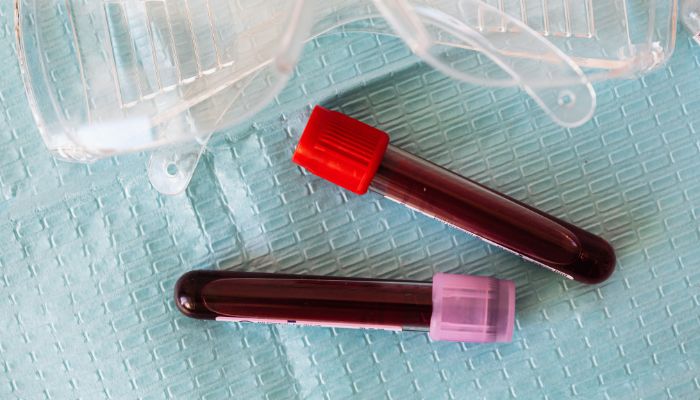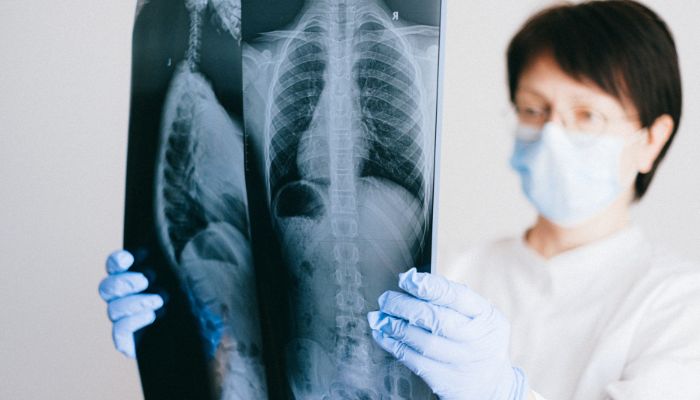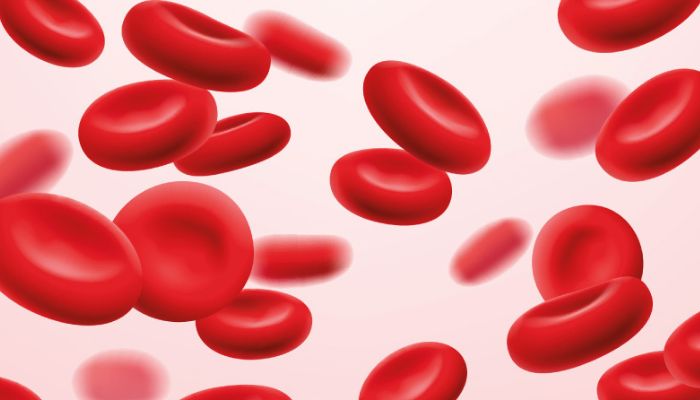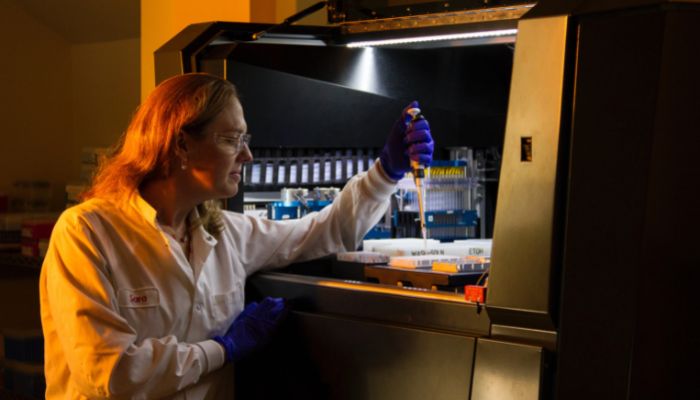|
Percentage of hypochromic red blood cells higher than 2%, DLCO of 65% or lower seen as factors by Marisa Wexler, MS Analyzing the color of red blood cells could help predict survival outcomes among people with systemic sclerosis (SSc), a study shows.
The study, “Hypochromic red cells as a prognostic indicator of survival among patients with systemic sclerosis screened for pulmonary hypertension,” was published in Arthritis Research & Therapy. Red blood cells carry oxygen through the bloodstream out to all the tissues. To ferry it, they use an iron-containing protein called hemoglobin. When iron-rich hemoglobin binds to oxygen, it turns red, which is how blood gets its distinctive “blood red” color. When iron levels are too low, red blood cells can become hypochromic, meaning they’re not as bright. Chronic inflammatory conditions like SSc may cause fluctuations in iron levels, but the clinical consequences are incompletely understood. In this study, researchers led by scientists in Germany assesed whether the percentage of hypochromic red blood cells — referred to as % HRC — was associated with differences in survival among people with SSc. The analysis included data for 171 patients who underwent screening for pulmonary hypertension (abnormally high pressure in the lung’s blood vessels). Among them, 81.3% were female, the mean age was 60, and nearly two-thirds had elevated pulmonary blood pressure. The patients were followed for a median of more than two years, during which time 18 died, mainly from complications related to lung disease. Probiotic therapy may need to be more personalized for autoimmune disorders by Marisa Wexler, MS People with systemic sclerosis (SSc) who have more severe digestive problems tend to have less diversity in the makeup of bacteria living in their gut, a new study reports.
Certain bacterial species, including Lactobacillus — present in commercially available probiotics — are more abundant in SSc patients with more digestive complaints, results show, which suggests that probiotic therapy may need to be more personalized for people with autoimmune disorders like SSc. The study, “Gastrointestinal tract involvement in systemic sclerosis: The roles of diet and the microbiome,” was published in the journal Seminars in Arthritis and Rheumatism. Other risk factors include pneumonia, pulmonary hypertension by Patricia Inácio, PhD from Scleroderma News Systemic sclerosis (SSc) patients with interstitial lung disease (ILD), where the lungs become scarred, are more than three times more likely to be hospitalized due to respiratory failure, according to real-world data collected in the U.S.
Other strong risk factors for respiratory failure among hospitalized SSc patients included pneumonia and pulmonary hypertension, or high blood pressure in the vessels that supply the lungs. “Outpatient optimization and inpatient recognition of these risk factors can lead to improved hospitalization outcomes for SSc patients,” the researchers wrote. The study, “Risk Factors for Respiratory Failure in Patients Hospitalized With Systemic Sclerosis: An Analysis of the National Inpatient Sample,” was published in the journal Cureus. Patients in racial minority groups found to be more dissatisfied with their lives by Patricia Inácio, PhD of Scleroderma News More than 30% of people with systemic sclerosis (SSc) are dissatisfied with their lives, and higher levels of dissatisfaction are reported by racial minority groups, a U.S.-based study has found.
The spiritual well-being of patients was the strongest contributor to life satisfaction scores. These scores were found to be significantly lower for Black, Asian, American Indian, and Alaska Native patients. “Spiritual well-being is particularly important in understanding life satisfaction in people with systemic sclerosis,” researchers wrote, adding that this should prompt further research to “assess and examine spiritual well-being and its impact on life satisfaction in a larger and more diverse systemic sclerosis sample.” The study, “Factors associated with life satisfaction in systemic sclerosis: Examining the moderating roles of social support and spiritual well-being,” was published in the Journal of Scleroderma and Related Disorders. Life satisfaction often reflects mental health status SSc, also known as scleroderma, is a chronic autoimmune condition that causes inflammation and fibrosis (scarring) of the skin, but it can also affect internal organs. Symptoms can include joint pain, fatigue, and gastrointestinal problems — all of which increase functional limitations and affect quality of life. Life satisfaction, a parameter that reflects how people evaluate their lives as a whole, is one of the tools for assessing quality of life. Life satisfaction often reflects mental health status and has been associated with mortality risk. However, few studies have addressed life satisfaction of SSc patients. Prior research has indicated that social support is important to help people with SSc cope with disease-related challenges, and that spiritual well-being has a positive impact on their perception of well-being. To understand the effects of spiritual well-being, integrated with social support and functional limitations, a team of researchers in the U.S. analyzed data from the University of California Los Angeles Scleroderma Quality of Life Study. SSc patients, 18 and older, completed questionnaires about their demographics, symptoms of depression, functional limitations, social support, and spiritual well-being. Functional limitations, social support, and especially spiritual well-being are all associated with subjective well-being in people with SSc. The disease has brought on many physical and mental changes for columnist Lisa Weber of Scleroderma News I often see a butterfly symbol associated with various autoimmune diseases, including scleroderma. While some conditions, such as lupus, can cause a butterfly-shaped malar rash, my research hasn’t yielded any other explanations for this connection.
However, I do have my own theory. Tucked safely away from the world, the butterfly’s life starts inside an egg as a caterpillar, unaware of the impending dangers or worries to come. This phase is like my life pre-scleroderma — a time when I believed all illnesses had cures. Becoming a caterpillar My diagnosis awoke me from my naive and simple understanding of the world. Before scleroderma, I thought I could overcome anything if I fought hard enough. If I saw the right doctors, ate the right foods, and lived a healthy lifestyle, I could win any battle and be healed. For the first few years after my scleroderma diagnosis, I waged war, aiming to become stronger than my disease. But the more I fought, the more I became a version of myself that I hated. Because I was so focused on scleroderma, I put the spotlight on everything health-related. This included all the physical changes, which made me feel ugly and less than my potential. My fingers tightened into awkward, bony sticks. I developed tiny, red blemishes all over my face called telangiectasias, and I saw disfiguring changes happen to my mouth. I felt like I’d morphed into something grotesque and unwanted. I now think of this as my caterpillar stage. During this phase of my life, I was angry and devastated. I felt as though my life would never be as beautiful as it was before I was exposed to the world of rare diseases. I battled myself as much as I battled scleroderma. I was so appalled by my physical changes, disabilities, and inability to find the magic cure I so desperately wished for. And it was destroying me. Researchers analyzed OxyHem levels in 267 patients screened for pulmonary hypertension by Andrea Lobo, PhD (Scleroderma News) Oxygenated hemoglobin may be a new prognosis biomarker for systemic sclerosis (SSc) patients screened for pulmonary hypertension (PH), a study in Germany shows.
Low levels of oxygenated hemoglobin (OxyHem), the protein that carries oxygen to body tissues, were significantly associated with worse survival among SSc patients. Also, the combination of a low predicted diffusion capacity for carbon monoxide (DLCO) — a standard lung function assessment — with low OxyHem may predict developing PH. “This study provides important insights into prognostic predictors and stratification models in SSc patients screened for PH,” the researchers wrote in “Oxygenated hemoglobin as prognostic marker among patients with systemic sclerosis screened for pulmonary hypertension,” which was published in Scientific Reports. A feature of SSc is the accumulation of scar tissue in the skin, which can affect internal organs. The level of organ involvement predicts the disease’s outcome. Pulmonary complications, including pulmonary arterial hypertension, are the leading cause of death among people with SSc. Screening and early diagnosis are essential to the disease’s prognosis. Previous studies identified oxygen saturation (blood oxygen levels) and anemia, or reduced levels of red blood cells in the blood, as prognostic predictors of SSc. Proteins are related to hypoxia, blood vessel disease, and collagen turnover by Patricia Inácio, PhD The levels of three blood proteins — endostatin, basic fibroblast growth factor (bFGF), and platelet-activating factor acetylhydrolase (PAF-AH) beta subunit — may help predict the risk of progression from early to definite systemic sclerosis (SSc), according to a new study.
“In particular, endostatin was the protein most strongly associated with disease progression, and it is worthwhile to further investigate its mechanistic roles for its possible pathogenetic [disease] role in SSc development and its therapeutic potential,” the researchers wrote in the study, “Proteomic aptamer analysis reveals serum markers that characterize preclinical systemic sclerosis (SSc) patients at risk for progression toward definite SSc,” which was published in Arthritis Research & Therapy. In SSc, or scleroderma, the immune system wrongly recognizes the body’s own proteins as foreign and mounts an immune attack by producing antibodies against them. The hallmark of SSc is thick and hardened skin, but other organs can be damaged. At early (preclinical) stages, symptoms are typically limited to Raynaud’s phenomenon, a condition wherein the fingers and toes become numb and cold in response to low temperatures or stress, along with SSc-specific autoantibodies, and abnormalities in the small blood vessels of the nail folds. About 50% of patients with preclinical SSc progress into definite SSc within five years of being diagnosed. Understanding what promotes that progression may help uncover potential therapeutic targets. |
AuthorScleroderma Queensland Support Group Archives
July 2024
Categories
All
|
Scleroderma Association of Queensland
©Scleroderma Association of Queensland. All rights reserved. Website by Grey and Grey.







